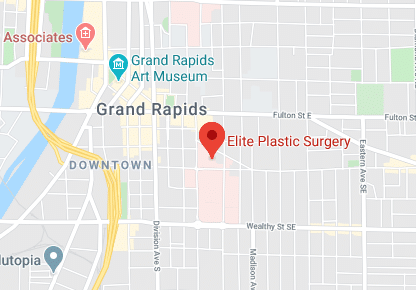
True. But since we’ve all been trapped inside now for basically a second winter thanks to this ongoing virus, when it finally passes we’re all going to want to make up for lost time with extra water-skiing trips, bigger outdoor barbecues, crowded outdoor concerts, all of it!
When you’re out there, our board-certified surgical team at Elite would like you to remember that big orange ball up in the sky isn’t exactly good for our skin. We perform many skin cancer excisions and reconstructions, and hopefully you don’t need to get on that list.
Just so you’re in the know, here are a few questions on skin cancer and sunscreen before we head into a welcome Michigan summer.
UVA vs. UVB or both?
Sunscreen labels can seem confusing, but it’s not really that complicated. You need a sunscreen labeled “broad based” or for “both UVA and UVB rays.” Initially, the thinking was that only UVB rays were dangerous, as those are the rays that affect the epidermis. UVB rays cause sunburns. But now we know that UVA rays are doing their damage from below. They penetrate into the dermis, the skin’s second layer, causing skin aging and the beginnings of melanoma and other skin cancers. So, while UVA rays don’t make you peel, they could be doing even worse things in the dermis.
How much SPF is needed?
SPF is an area of confusion. People think that the more SPF the better, and they pay through the nose for it. But the reality is that over an SPF of 30, the difference is only a couple percentage points in sun blocking ability. Those SPFs that claim 50 and higher are probably just setting you up to pay more.
If you get skin cancer you die.
Although it is the most common cancer worldwide, skin cancer isn’t the biggest killer. Most skin cancers, if detected early enough, are all treatable with surgery. That’s why yearly visits to a dermatologist are important, to catch skin cancer early. And if it turns out to be melanoma, then call Dr. Cullen and have him remove it and reconstruct the area if necessary.
Skin cancer is the most common form of cancer
This is true. It is estimated that one in five Americans will develop skin cancer in their lifetime. More than 8,500 people in the U.S. are diagnosed with it every day! Probably double that or more are undiagnosed.
Sunscreen prevents skin cancer
Nope. Sunscreen helps block the rays than lead to skin cancer, but just because you have on sunscreen doesn’t mean you can spend every waking minute in the sun without repercussions. Sun damage is cumulative.
If you have lots of moles, you have a higher risk of melanoma
Although moles don’t usually turn into skin cancer, there is a correlation between moles and developing melanoma. People with moles, especially large ones, have a higher risk of melanoma. The rough number is 50 — if you have more than 50 moles on your skin, your risk of skin cancer is higher.
Hopefully this can be a summer to remember after these last two winters of our collective discontent. Protect your skin while you’re out there. And if your dermatologist sees a complicated surgical removal is necessary, please call us at Elite Plastic Surgery, (616) 459-1907. That’s what we do.


No comments yet.